

− Content −
1.Basic of Water
2.Water Crisis
§1.World Water Crisis
・Health damage by
lack of water
・Change of Water resources
site due to global warming
・Lack of agricultural water
by underground drought
・Decline of biodiversity due to
water shortage and pollution.
・Area conflicts by
lack of water
・Virtual water trade
・Future prospects
§2.Water Issue
・Cause and current condition
of water issue
・Water issue in rivers
・Waterissue in lakes・marshes
・Water issue in ocean
-Red tide
§3.Cause and Condition
・Global warming
・Ozone layer depletion
・Deforestation
・Desertification
3.Environment Measure

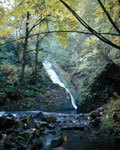

|

§1. World Water Crisis
Water crisis is the word expressing the condition of water resource in the world, and it is suggested by United Nations. Especially, lack of water and water pollution are regarded to the main issue.
Health damage by lace of water
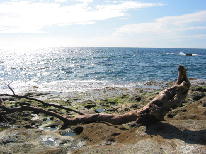
According to the United Nations estimation, 1.2 billion people, representing one-fifth of the world's population, are not able to obtain adequate drinking water. Moreover it is said that 2.6 billion people cannot get proper environmental sanitation water (wastewater treatment ect.).
This problem cause a vicious cycle, and drinking water is contaminated with untreated water due to the lack of sewage treatment facilities. As a result, this problem has disturbed the supply of adequate drinking water. It leads to illness and death toward people who use water sources contaminated, and 3 - 4 million people each year have died from the disease derived from water, such as cholera and diarrhea.
It is regarded that death caused by water pollution is prevented if water quality improves. However, there is the limit of the capable safety water in the earth, so it is not easy to be solved. Some cases are solved by water treatment technology such as wastewater treatment plants, though it spends lot of costs. Thus, it is difficult for developing countries to pay the money. By economical development of developing countries, most parts of issues will be gradually solved. However, to stably solve these issues, it is necessary to regulate water resource and population and to establish management system for water source. It doesn't enable to improve the issues, if the idea that water source is limited spreads out.
Change fo water resources site due to global warming
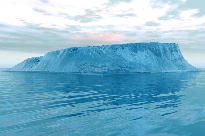
World water source change the location due to geography, time, and season. Rain amount differs depending on atmospheric circulation. The reason why few rain in deserts is less likely to emerge cloud because watery vapor comes down by atmosphere pressure.
According to Food and Agriculture Organization of the United Nations (FAO), 90% of useable water in rivers, lakes, marshes are not used. That is because water source is not equally distributed. In Middle East and North Africa where has less rain, water amount for one person per year is less than 1000m3. On the other hand, South-Eastern Asia where has Asian monsoon weather and lots of rain or North America which is rainforest climate, there are countries which water amount is more than 10 thousands m3.
However the situation is different in daily water amount. It is actually depending on water resource amount by natural condition, but countries even in South-Eastern Asia where has rich water has lack of daily water due to undeveloped water supplying facilities such as dam and reservoirs. On the other hand, oil countries in Middle East obtain daily water by import of virtual water and desalination plants because they have money. In general, developed countries such as Japan and US use lots of water while lack of water in poor countries.
Intergovernmental Panel on Climate Change (IPCC) expect the available quantity of water is reduced by 10 to 30% such as southern Africa and increases 10 to 40% in the high rainfall area of South America and Asia in the middle of the 21st century. The IPCC has pointed out the frequent occurrence of torrential rain and an increase in drought region temperature rise due to global warming progresses.
Lack of agricultural water due to underground water drought
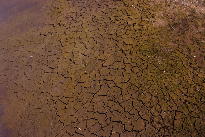
Agricultural water will represent the largest part of water demand. Irrigated agriculture which is conducted to keep the effect of weather to a minimum and obtain stable water can't be done without stable water supply. Therefore, the development of water resources as rivers, lakes, marshes and underground water have been developed. However, since the water intake beyond the limit of water sources, lack of agricultural water in the water emerges as the issue in the world.
Because irrigated agriculture demands the water source which is from rivers, rivers were the source of stable agricultural water. However, due to large-scale development, dams were constructed. By keeping temporal water amount, it started taking more water than stably supplying.
Currently, the Huang River in China has issue related to temporal drought in downstream every year. In 1997, it lasted drought from the river mouth to 600 km more than 260 days. It was because 90% of water was taken from upper stream to middle stream.
After 20 century, mechanization of underground water use has progressed. Now a large amount of underground water is diverted to agricultural water. Consequently, in developed countries, moer than sustainable amount underground water was taken, so that they have faced agricultural crisis. Increase of productivity in current agriculture has been conducted based on the idea that agricultural water is unlimited. Therefore in many areas faced with the choice of whether to pump large quantities of water expecting only short-term harvest or to limit water intake in a planned manner in order to production of long-term stability.
Moreover, in developing countries such as China and India, pumping too much groundwater, causes to significantly decrease in the groundwater.
In the United States which is one of the developed countries and an agricultural powerhouse, there are many areas where agriculture are affected by pumping excess of groundwater. It has been facing the risk to maintain the water quality and to continue long-term agriculture. The Ogallala aquifer is the largest underground water source in the United States and it spread extends over 8 states in Midwest and Southwest. Now the Ogallala aquifer is lowering of the groundwater level in many places. That is because groundwater replenishment is very few due to weather conditions and the structure of geological, while aquifer of pump discharge increase by large irrigation.
Decline of biodiversity due to water shortage and pollution
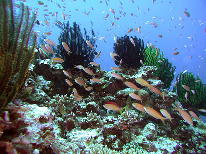
Typically, wild plants and animals live with enough water. Originally, in the ecosystem and biome on the earth, there are variety of organisms by the benefit of enough water. Those rich biodiversity are threatened at the expense of the rich life of humanity in recent years. As a result, the introduction of alien species due to transportation and movement of people occurs, but the main cause is due to destruction of their habitat. It is clear that wetlands, marshes and riparian zone is not viable without the supply of suitable water. However, as the available water declines in land ecosystems such as forests, it is subject to damage significantly in their lives. In the case of wetlands, because of the supply of housing and food to support the growth of population and the development of the industry, a wide range wetlands were exploited and its nature was lost.
In tther regions, by the construction of dams, water flow is reduced and land is lean.
Biodiversity on earth is not equal, so there is rich diversity in tropical high rainfall, while the number of species decreases in the low rainfall, altitude and high latitudes. Biodiversity is affected by climate, elevation and soil, as well as other organisms that are present. However, water is the most important factor.
In the forests basin of the Amazon in Brazil where has rich water, there are 20,000 species of plants and millions species of insects. Most of all those species are endemic species. In the Madagascar island which was separated from the African continent, due to dry in deciduous forest and lowland tropical rainforest, the ratio of endemic species biodiversity is very.
Even in this area which is a treasure house of ecosystem, large-scale logging is carried out in the majority forest due to population growth, agriculture and factory construction. Slash-and-burn agriculture eradicates the organisms of this region, and that alters the wilderness of barren.
Wide range of soil is eroded because of deforestation, a lot landslides flow into the river which pollute river water. Also domestic and industrial wastewater contaminated water. As a result, not only important domestic water robbed from the people, but also plural ecosystem of the river systems are destroyed and plural fishes forced to stand in danger of extinction, even the coral reefs of the ocean has been lost.
Area conflicts by lack of water
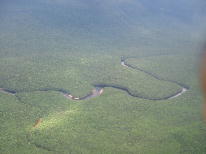
There are about 260 riverine systems in the world, and these rivers are flowing over the borders of countries. There is the Helsinki rule that defines the right to use of international water resources. However, water issue is directly related to our life, dispute has occurred against water. In many cases, there are other tensions between the border, and water right issue is additionally included in the conflicts.
Tigris・Euphrates river system is the water source which is used in several countries, but the conflict is occurring the right to use the water. Countries such as Iran, Iraq and Syria are claiming legally use of this water source, and the total demand amount has gone above the water itself. In early 1974, Iraq did assemble troops to the border area to destroy the Assauradamu of Syria located on the Euphrates River.
In the Danube in Europe, Czechoslovakia and Hungary had conflict with the installation of dams and use of water, and it was left to the decision of the International Court of Justice in 1992. In North and South Korea, Palestine and Israel, Ethiopia and Egypt, same conflicts have occurred. In addition, in the Mekong river, China constructed XiaoWan dam on the upper stream. Basin countries have worried that Mekong delta and coastal farmland became reduced because of under construction dam stop the quicksand. Basin countries consisted "Mekong River Commission" and it has been discussed about dam. They also pointed out that it could lead to a new anxiety factor of Asia.
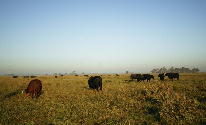
Usually, water is not subject to trade. However, it is considering that the water is required for the production of trade goods, so it is possible to consider along with the movement of goods, required water also are traded with their production. Those trading of water are called virtual water trade. In particular, Agricultural products, livestock products, and timber resources which large amount of water is required are the most important in the virtual water trade. For Countries where have insufficient water resources, import of agricultural products and animal products (= import virtual water) is only selection to ensure the water. Through the import of agricultural products, countries of Africa and the Middle East supplemented shortage of water resources by imports of virtual water. However, import virtual water has another side that it leads to decrease of food self-sufficiency rate. United States and European Union (EU) have highly developed and agricultural technology. The amount of domestic import from these countries reached 60% of the world import. These products are cheap and various kinds so that domestic products of importing country which depends on scarce water resources cannot competitive with those cheap products from other countries. Thus, that cause reduced self-sufficiency of power and unemployment problem due to a decrease in domestic agricultural production.
On the other hand, the exporting countries consume the water resources in export of virtual water, and the export of agricultural products with export of virtual water are 1/15 of the total annual water consumption of domestic in the U.S. In Thailand a major exporter of rice reach 1/4, so those countries doesn't have plenty water resources. Therefore some area may occur depletion of groundwater and shear flow. In Japan, a major importer of virtual water, there is also low food self-sufficiency rate, so there is also a risk of emerging water crisis worldwide becomes a food crisis.
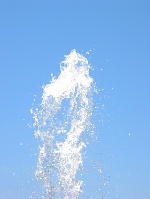
Because of changes of climate, river flow, and population growth, it is estimated that in the Mediterranean coast, the Middle East and the western United States, about over 40 million people suffer from water issue in 2050, and in 2075, the worst case, about 90 million people suffer from water stress.
In order to save the water crisis in this world, it will need to measure on a global scale. Reducing groundwater intake and installing wastewater treatment facilities seems to be the solutions, but the cost for wastewater treatment facilities is high not only developing countries but also developed countries. Some areas where give priority to secure the beverage and food have to give up in the reality. Even if they could install wastewater treatment facilities by advanced technology, it is necessary to maintain for cost of human, economic costs and enormous energy.
The regulation on the amount of underground water is easy to be first glance policy. However, it has been bit hard financially for agriculture and industrial production. It might be a defective that it cannot nourish present population.
As practical solutions to problems, in developing countries, it starts to construct basic wastewater treatment facilities (such as sewage treatment tank), the drainage and sewage, and it should become minimizing the impact for drinking water and ecosystems. Developed countries import not only providing of advanced technology but also a proposal efficient economically and high cost effective water treatment system.
|
|












